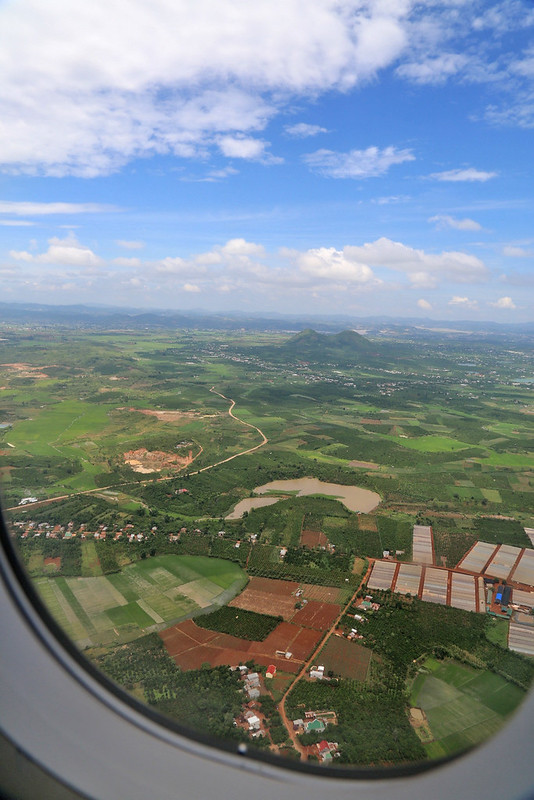
On the second day of our Vietnam trip with VietJet Air, we flew to Da Lat in the south central highlands. Just half an hour away from bustling Ho Chi Minh City (HCMC) and it's a different world that's much more laid back.
Da Lat in Vietnamese means "water/stream of the Lat people"- da meaning "water". The Lat are the indigenous folks there and we were told they are short, plump and rosy-cheeked. Most of them are farmers.
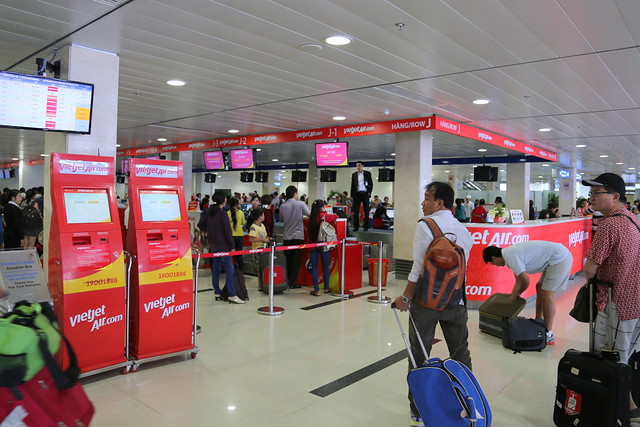
We left from the HCMC domestic terminal, which is right next to the international one. If you take a bus from HCMC, it may be 7-9 hours (depending on traffic). Flying is so much faster.
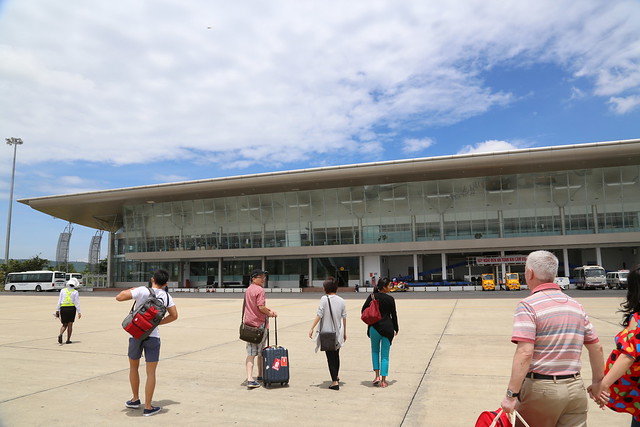
Da Lat's Lien Khuong terminal is pretty new. It serves a lot of local tourists, especially from the North who are just beginning to explore their country.
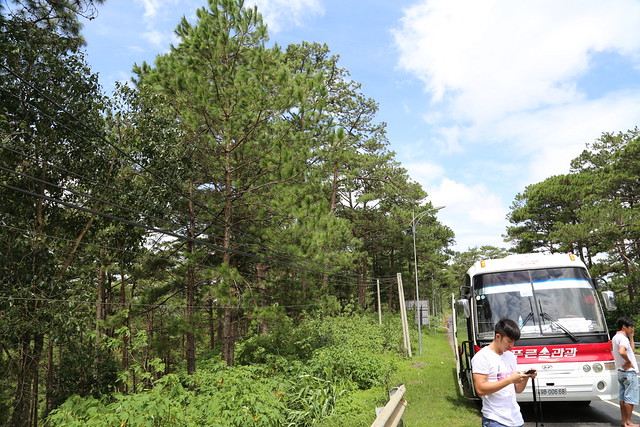
From the airport, there's still a half hour ride to the city (30km). You can choose the shuttle bus for only 40,000VND (about US$2) or go for the taxi for 250,000VND (about US$12.50). It's a no brainer. Bus wins (just make sure you specify your drop-off destination). You do get a scenic ride past some pine trees on the way up.

There's lots of French style architecture in Da Lat, because the French colonials used to build villas here to escape from the heat of Saigon. There's even a Moulin Rouge (complete with windmill) restaurant and an Eiffel Tower look-a-like.
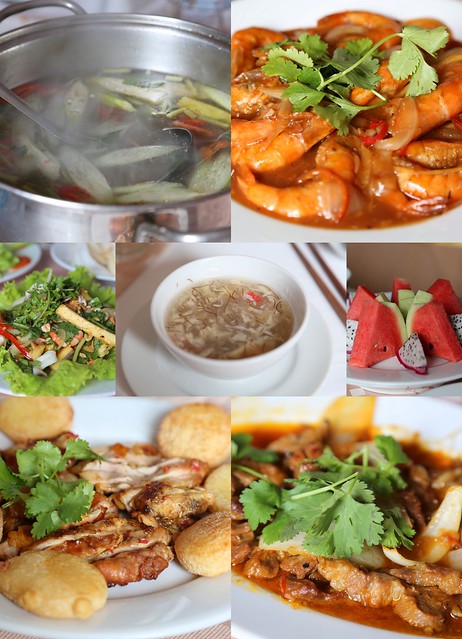
Despite the French facade, it's Vietnamese fare here at the Moulin Rouge. The soup (upper left) was interesting because it had this spongy vegetable stalk that none of us had tried before. Grilled pork with fried glutinous rice cake (bottom left) was also good. And it seemed that everywhere we went, dessert was watermelon and dragonfruit (so much so we started making bets on whether that would be the next dessert).

Durian seller under a tree opposite the restaurant. Durians are not grown at this altitude. They are brought up from the warmer regions below the mountains.
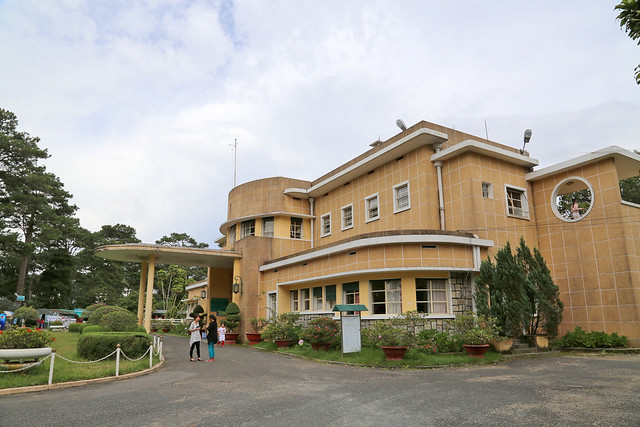
Da Lat was also the hunting ground of the last emperor of Vietnam, Bao Dai. This is his summer palace, which was built in the 1930s. It houses the grand meeting reception halls, office, and personal artifacts. The art deco building must have been avant garde then, but now it's like a time machine bringing us back to an emperor's hedonistic heydays.
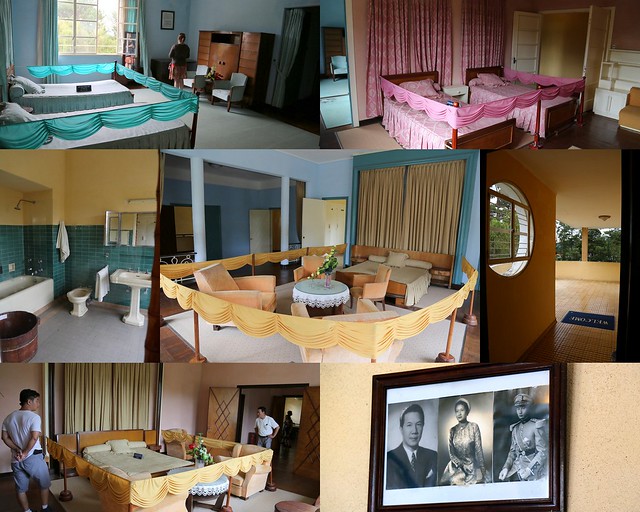
The building has 25 rooms. The lower floors are all business. The upper floor has bedrooms for the royal family. Interestingly, the emperor and empress had separate bedrooms (well, he had about five wives/concubines, and multiple children). Everything was left as is, including the furniture.
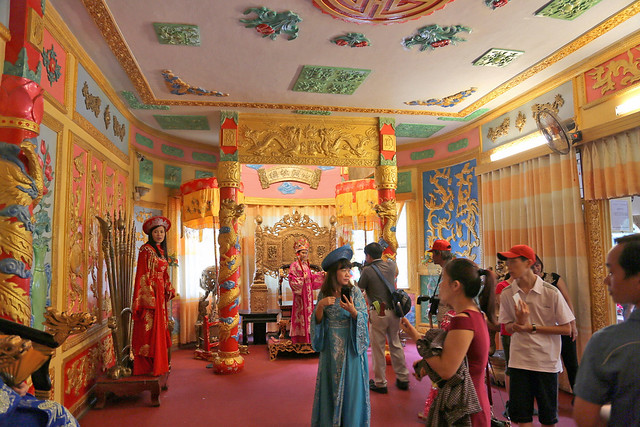
At one end of the lower floor is a kitschy throne room whose grandeur contrasts with the staid decor of the rest of the palace. This is where you can play at being an imperial ruler and take photos (for a small fee, of course).
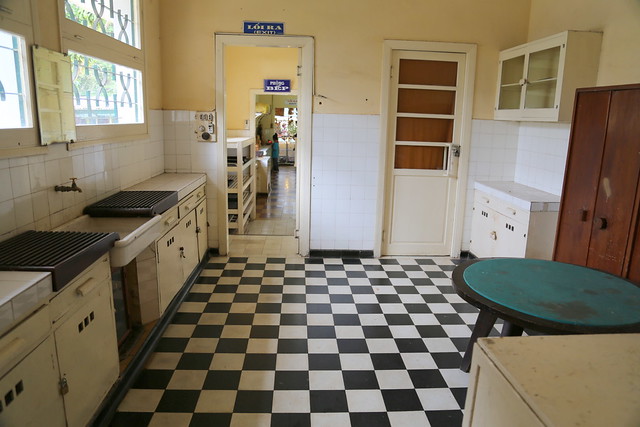
The more interesting parts are the areas that were in actual use. This is part of the kitchen.

All in all, it really is like a place that time forgot.

The palace still has gardens (including a miniature maze). I don't know what flowers these are, but they are pretty.
After the palace, we went to see another cultural site.
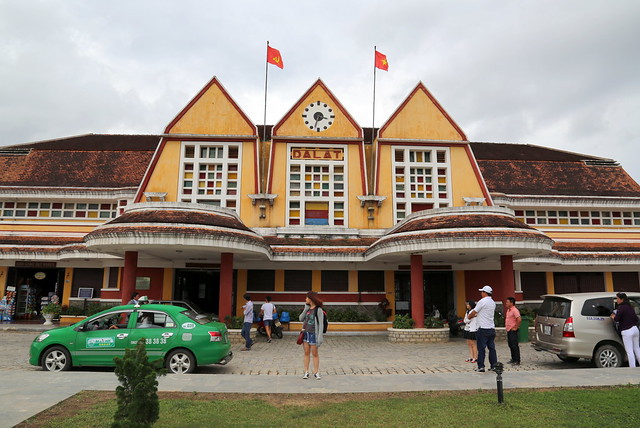
The Da Lat Railway Station, completed in 1938, is a national historic monument, thanks to its unique design. French architects Moncet and Reveron combined art deco with Vietnamese elements. The high, pointed roofs are characteristic of the Cao Nguyen communal buildings of Vietnam’s Central Highlands.
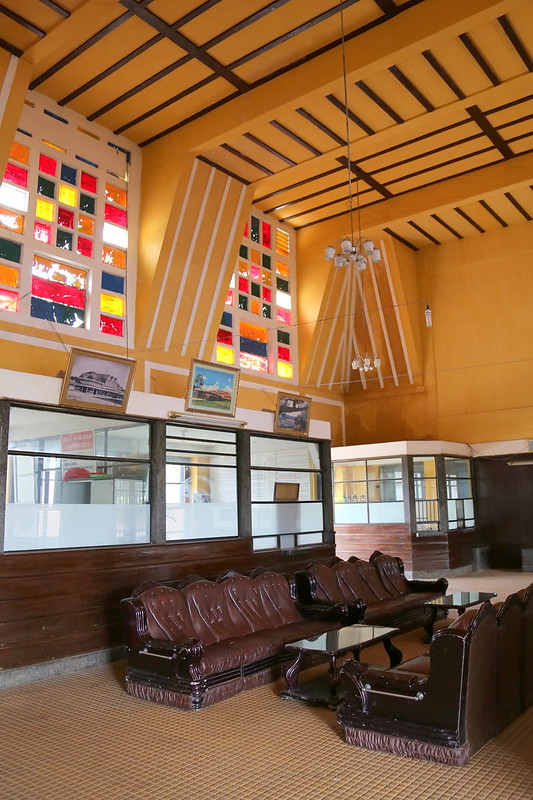
Colourful windows under each of the pointy roof bring light into the spacious hall.
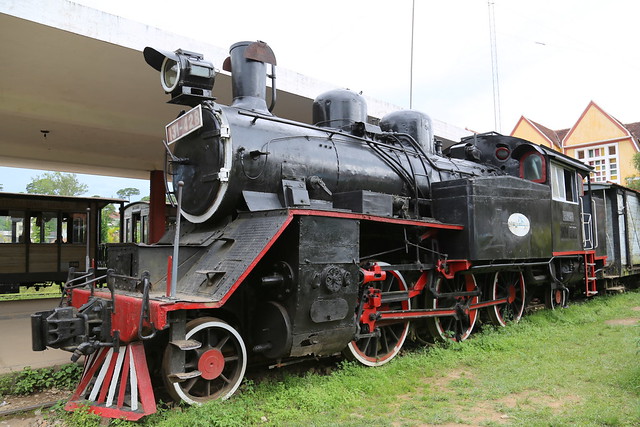
The old steam locomotive is one of the two trains on display here. They used to have 11 of these.
While the station's no longer connected to the main Vietnam rail network, it still sees services to Trai Mat, where you can visit the Linh Phuoc pagoda.

Hydrangeas grow very well in Da Lat. There were lots in the garden in front of the railway station.
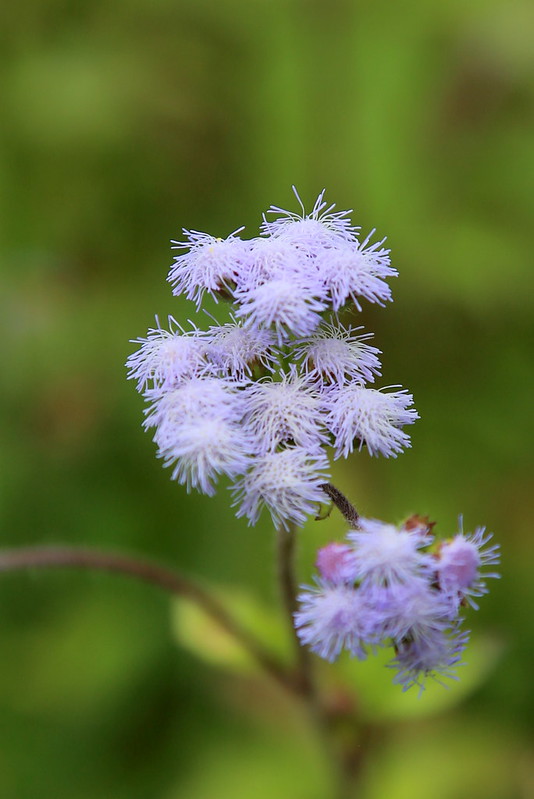
Close up of a random flowering plant, probably some exotic mimosa.
We also visited the Flower Park, which showcases some 300 varieties of flowers. Lot of foreign blooms were imported for cultivation in Da Lat over the years, and it is also known as City of Flowers.

You'll see lots of families, tourists and couples here (Da Lat is also known as "honeymoon city").

We stayed at the Ngoc Lan Hotel.
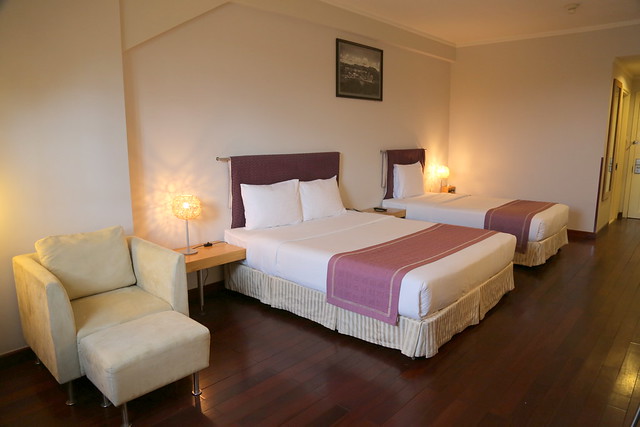
I got a really spacious room. You could do cartwheels in here! Others had a much more cosy configuration but with added balcony.
Our tour guide had earlier told us there is no airconditioning in Da Lat - it simply was not necessary because of the cool weather. But it didn't sink in until I saw that my hotel room really didn't have aircon.
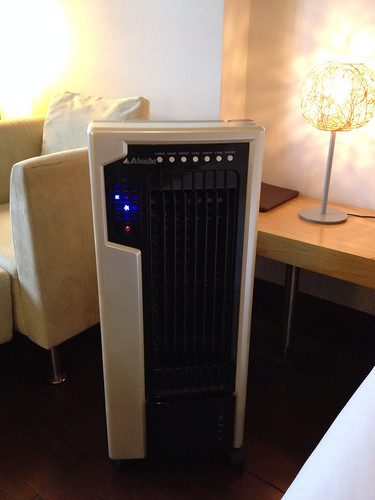 iPhone 4S photo
iPhone 4S photoOnly this air cooler unit that you roll out and plug in next to your bed. A very amused friend nicknamed it my R2D2. Sadly, the cold air function was disabled. Only the regular fan works. I nicknamed it Bad Robot. Fortunately, temperature does drop a few more degrees at night, so sleeping with just the fan was fine.
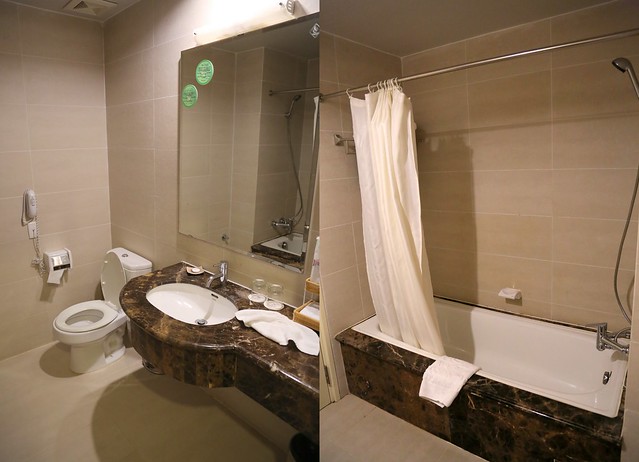
Bathroom was decent and clean. Oh, the hotel had a spa with really cheap massage services. Like US$8 for a full-body massage - I forget how long...45 mins? 120 mins? I can't imagine how much cheaper it would be for massages outside the hotel!
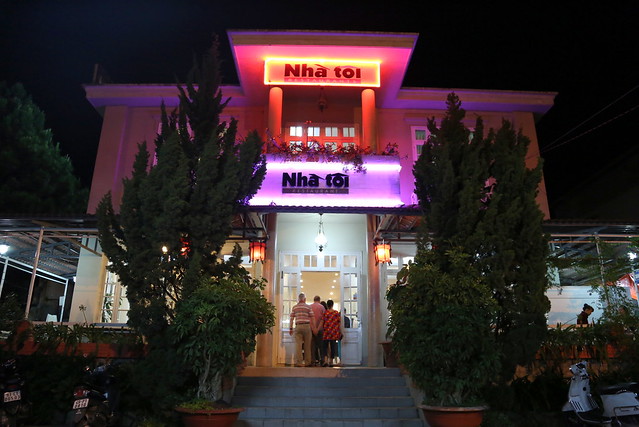
Dinner was at Nha Toi, which means "My House". Nha = House.
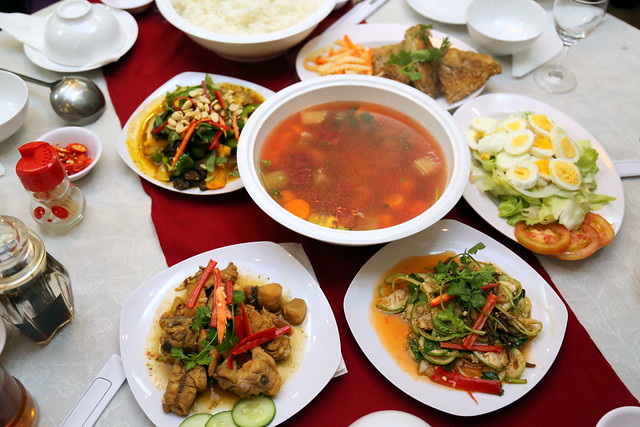
A very safe spread of Chinese-Vietnamese dishes, salad and soup.
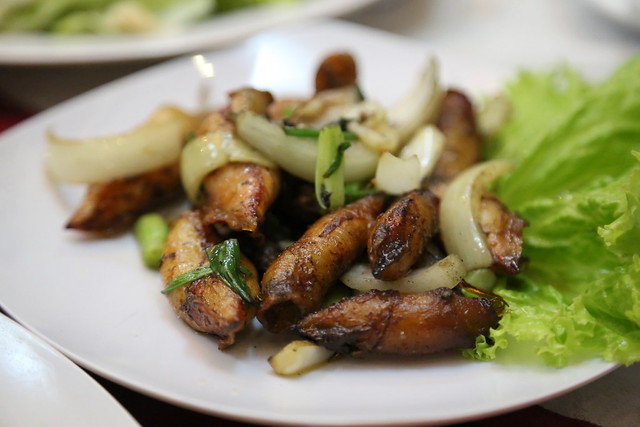
The grilled stuffed baby squid was remarkable. Didn't look like much, and no, I didn't know what they were stuffed with, but they were addictive!
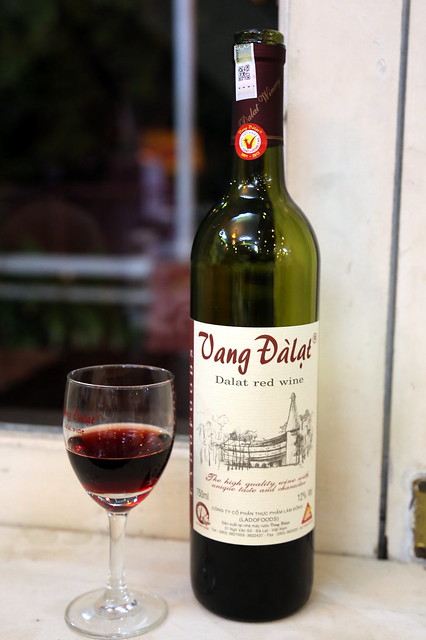
Da Lat also has a nascent wine-making industry. This bottle of red came recommended.

The city centre comes alive at night with Cho Am Phu or "Hell Market", which is so named because a long time ago, they didn't have any lighting. Imagine everything in darkness or candlelight.
The stalls are numerous, stretching all the way down the streets, but many sell the same things - clothing, woollen wear, chips/snacks, dried goods.
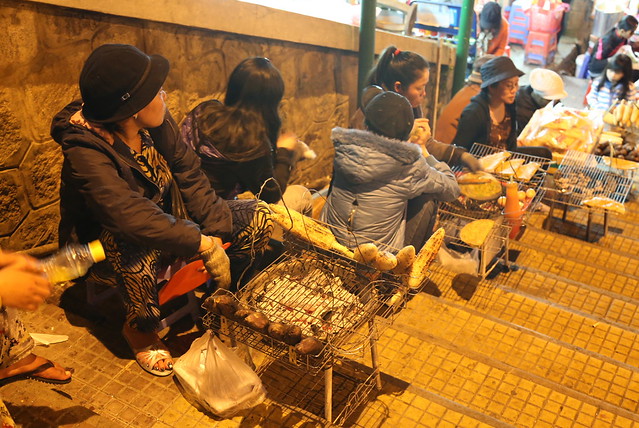
There are also lots of street food vendors, hawking all manner of grilled goodies - corn, sweet potatoes, squid, sausages, and so on. Many are unlicensed and always on the lookout for police. We saw them pick up and run - not easy with the hot coal grills!
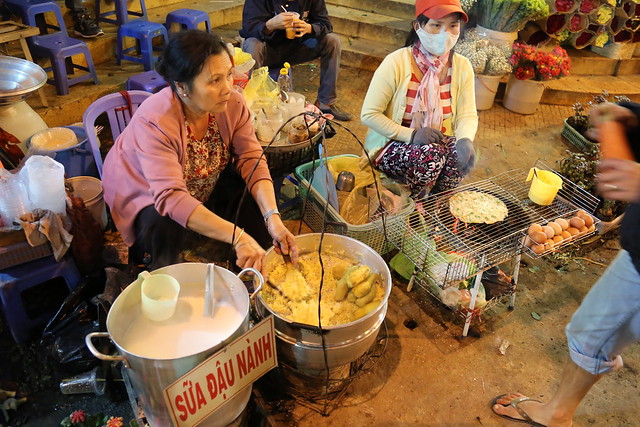
Soy milk is very popular here, and some of them come flavoured with green/mung bean, sesame or peanut. But what caught our attention was the lady (on the right) who was making these crispy rice paper rolls - bánh tráng nướng.
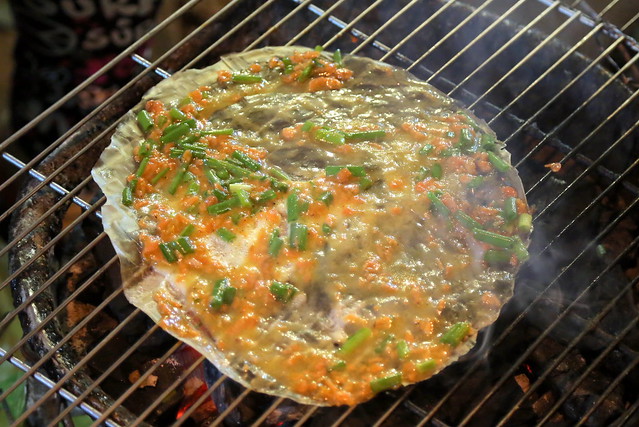
There's a savoury mixture of egg, shrimp and scallion cooked on top of the rice paper which acts like an edible skillet! It's a hot crispy mess but so so delicious. Bánh tráng nướng - I will remember this.

French style rolls and pastries seem popular here. Again the French influence.
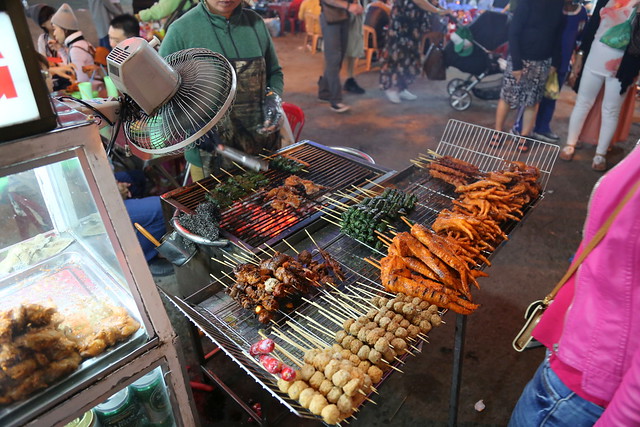
The locals were all going for the skewered BBQ treats. The chicken claws look extra gigantic though. Kowai! Scary! I will stick to dainty phoenix claws.
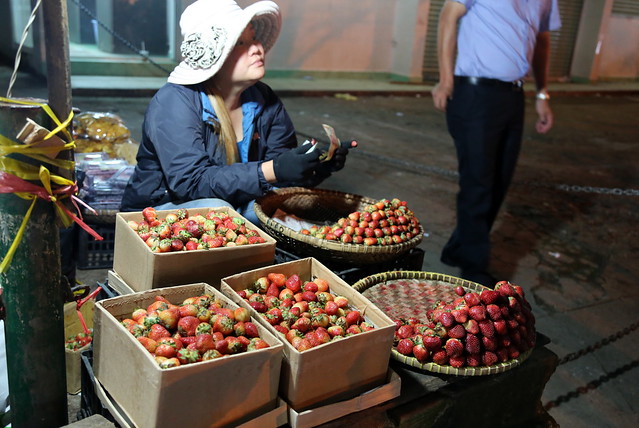
Da Lat is also known for strawberries. You'll see them fresh or preserved in jams. We also saw other goods like dried shredded artichoke, red and white ginseng, artichoke tea, green tea, vegetable chips and sweet potato chips, etc. Much of it really cheap.
The market is also near Xuan Huong Lake, the big scenic lake that is the heart of Da Lat. A breezy night there can be lovely. Or you can head to the various cafes for some hot Vietnamese coffee. This is a town where you can chill and take your time.
There's more to explore in this capital of Lam Dong province but we head back the next day to see more of Ho Chi Minh City.
Day 1: Ho Chi Minh City - Pho, Thien Hau Temple, Cyclo Ride, Water Puppet Show, Saigon River Cruise
Day 2: Da Lat (this post)
Day 3: Day 3: more sights of Ho Chi Minh City - Jade Emperor Pagoda, Independence Palace, Notre Dame, Saigon Post Office, Vietnamese Coffee
Many thanks to VietJet Air for the media familiarisation trip.
Photos taken (except where indicated) with the Canon 5D MkIII kindly loaned by Canon Singapore
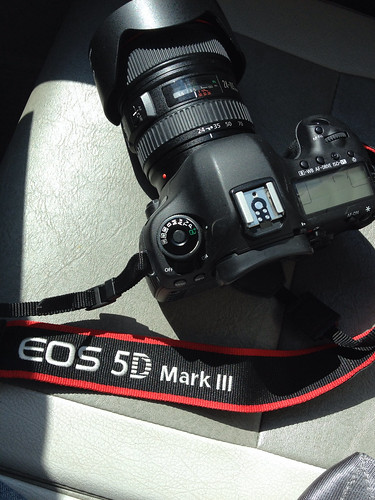

How lonng from Intl airport to Da Lat? And also, from Da Lat back to Ho Chi Minh city?
ReplyDeleteWell, if you read the first paragraph...the flight is just half an hour. But you do have to take another half-hour shuttle or taxi to the city. Still better than by bus (7-9hrs).
ReplyDelete